Abstract
Selecting a control group that is perfectly matched for ethnic ancestry with a group of affected individuals is a major problem in studying the association of a candidate gene with a disease. This problem can be avoided by a design that uses parental data in place of nonrelated controls. Schaid and Sommer presented two new methods for the statistical analysis using this approach: (1) a likelihood method (Hardy-Weinberg equilibrium [HWE] method), which rests on the assumption that HWE holds, and (2) a conditional likelihood method (conditional on parental genotype [CPG] method) appropriate when HWE is absent. Schaid and Sommer claimed that the CPG method can be more efficient than the HWE method, even when equilibrium holds. It can be shown, however that in the equilibrium situation the HWE method is always more efficient than the CPG method. For a dominant disease, the differences are slim. But for a recessive disease, the CPG method requires a much larger sample size to achieve a prescribed power than the HWE method. Additionally, we show how the relative risks for the various candidate-gene genotypes can be estimated without relying on iterative methods. For the CPG method, we represent an asymptotic power approximation that is sufficiently precise for planning the sample size of an association study.
Full text
PDF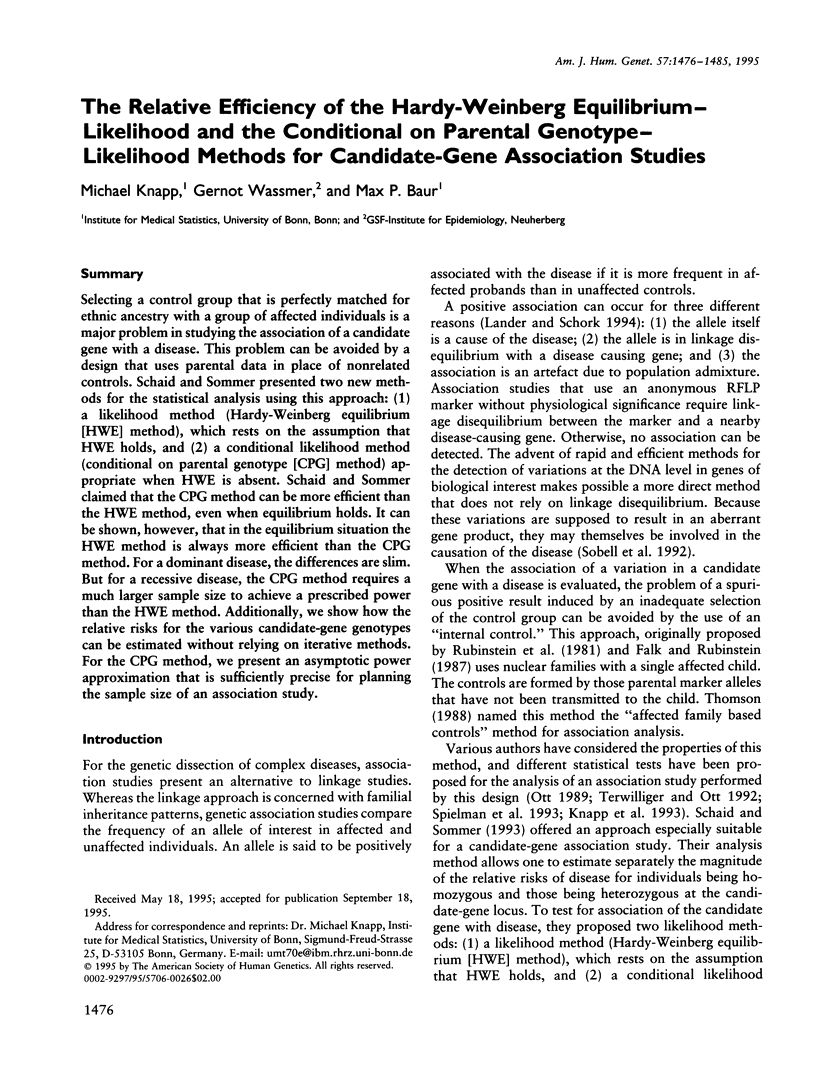

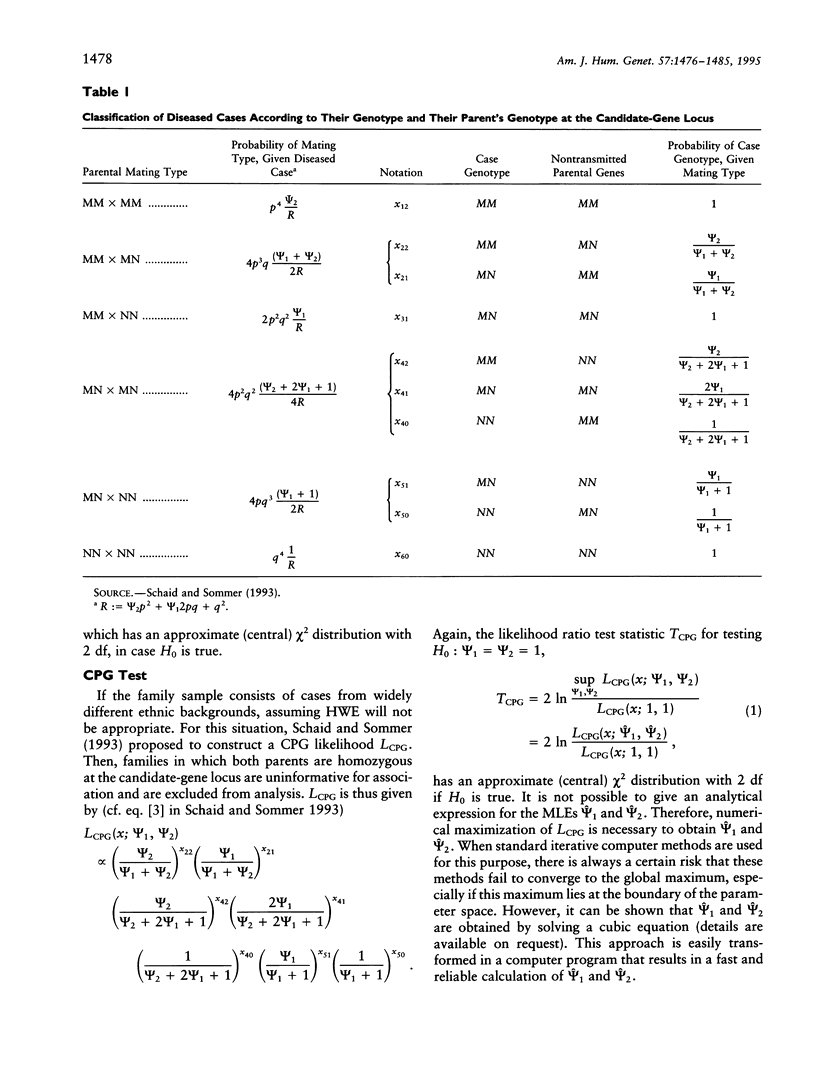
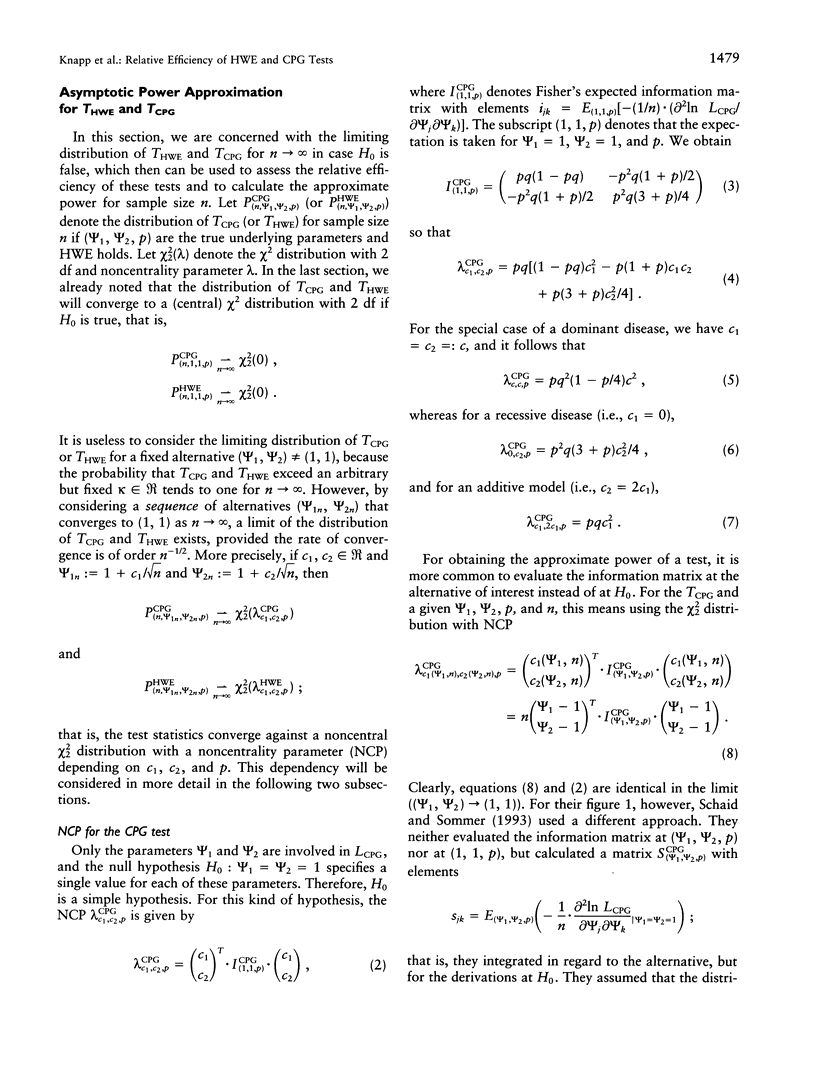
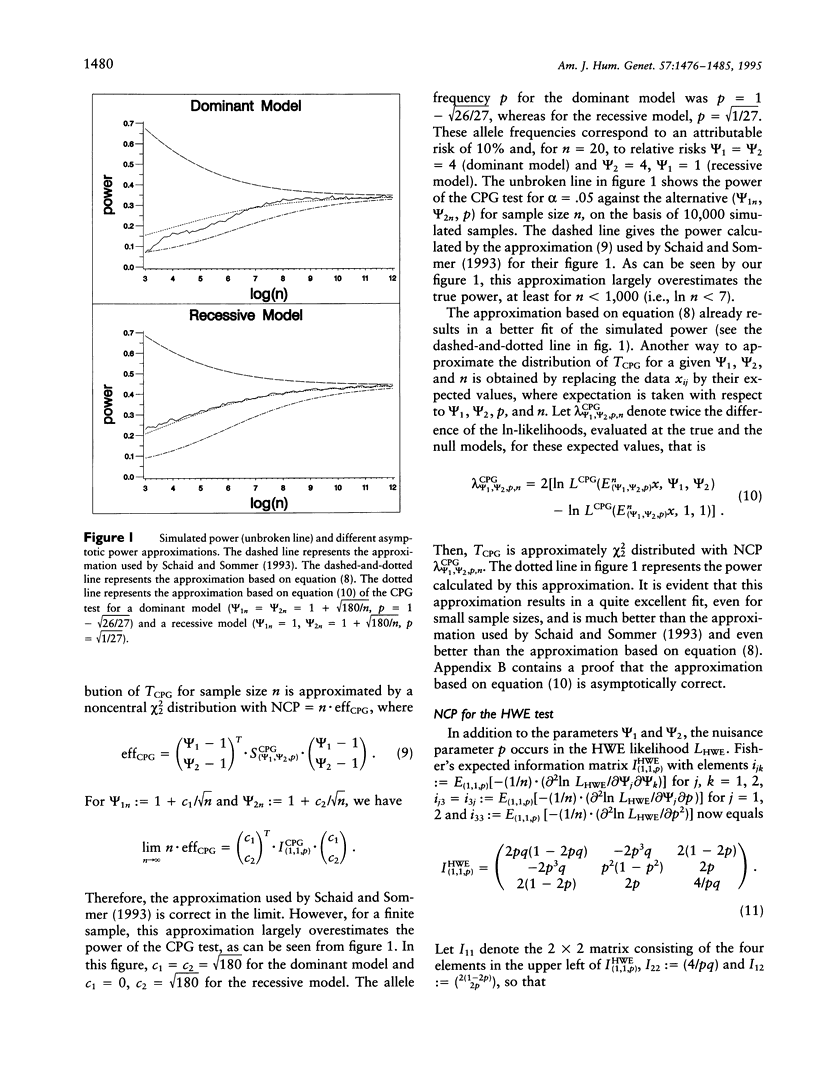
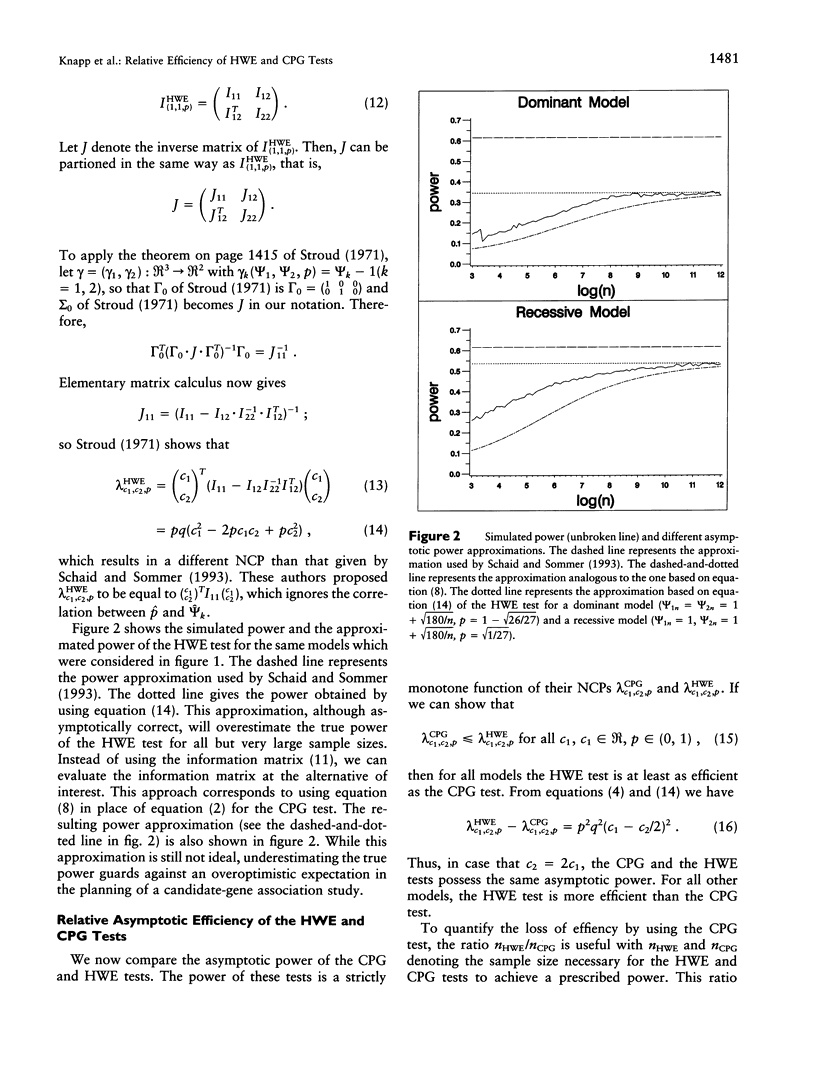
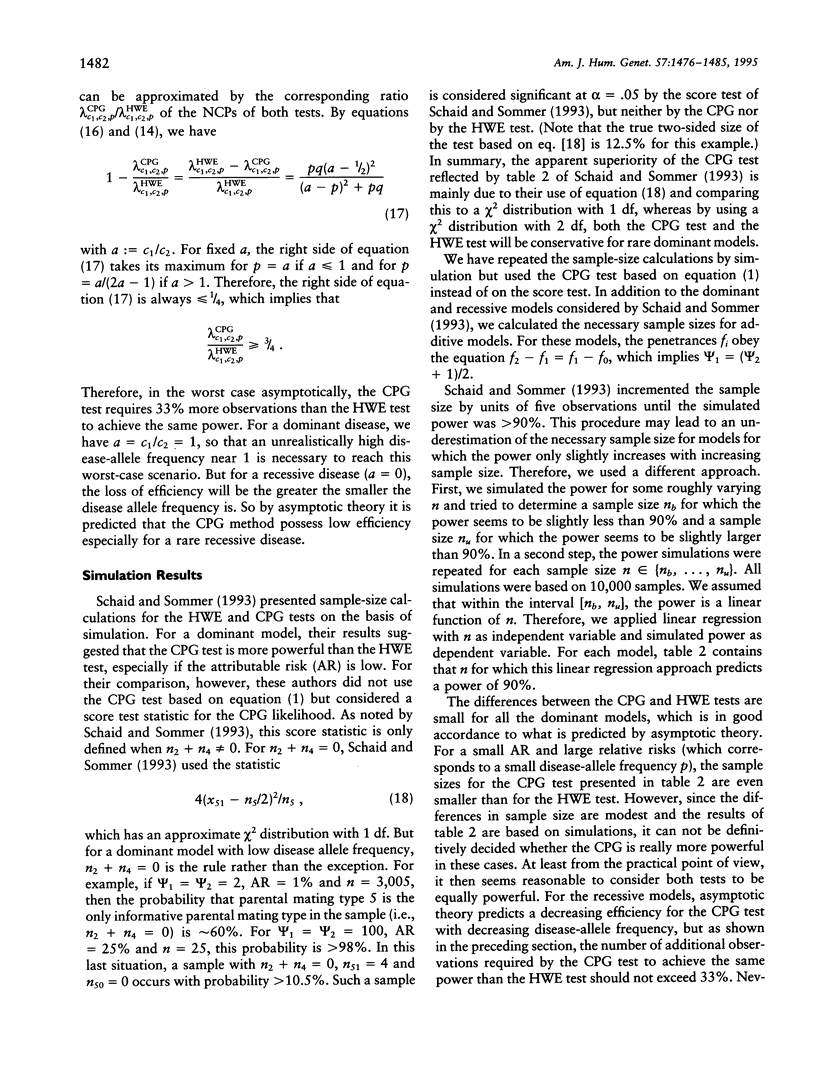
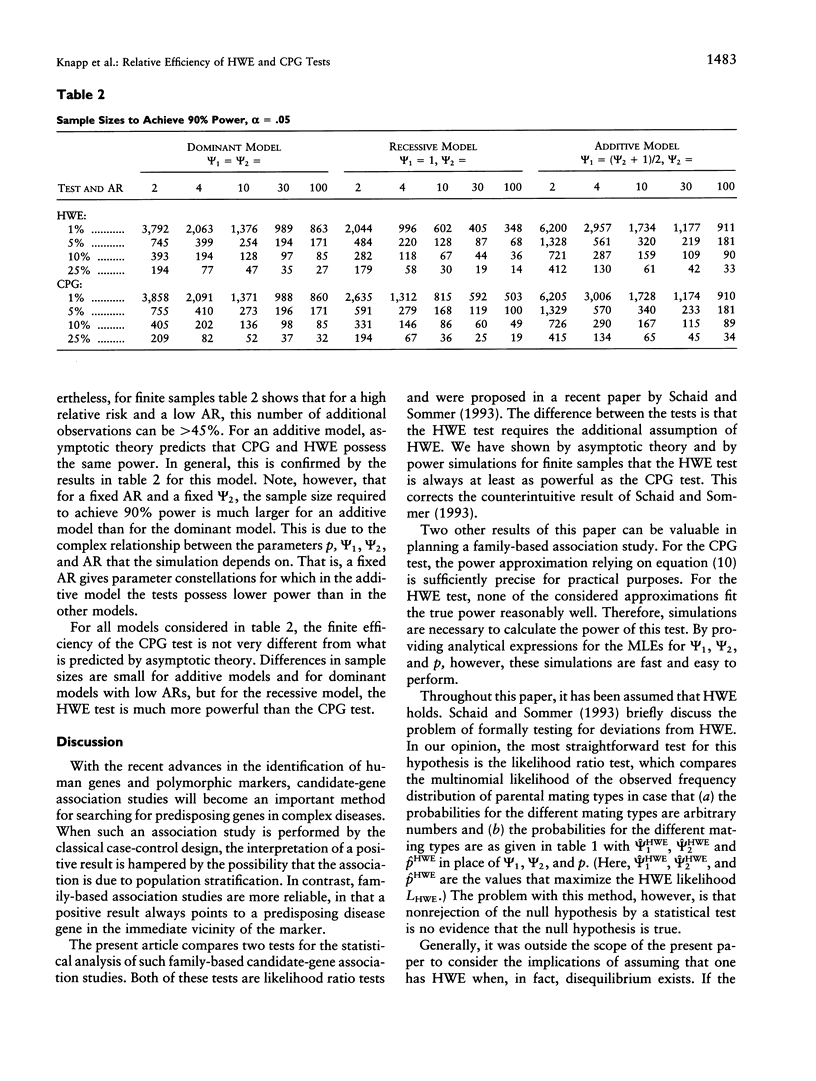
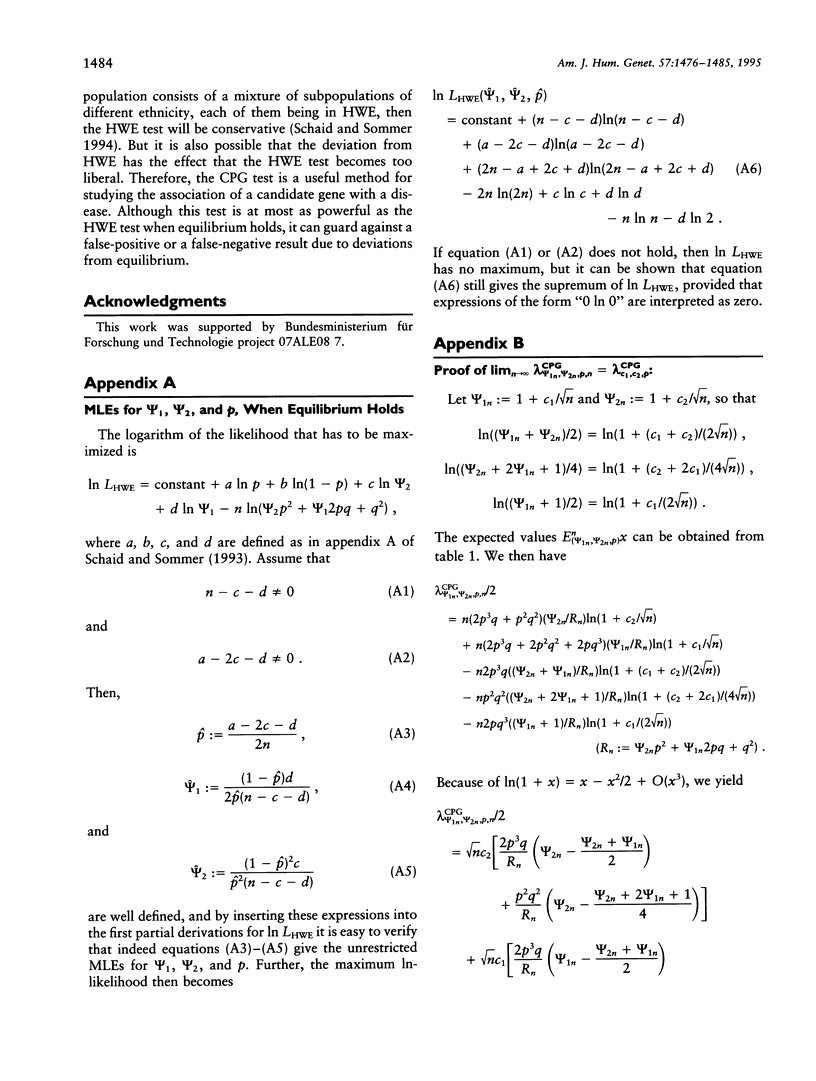
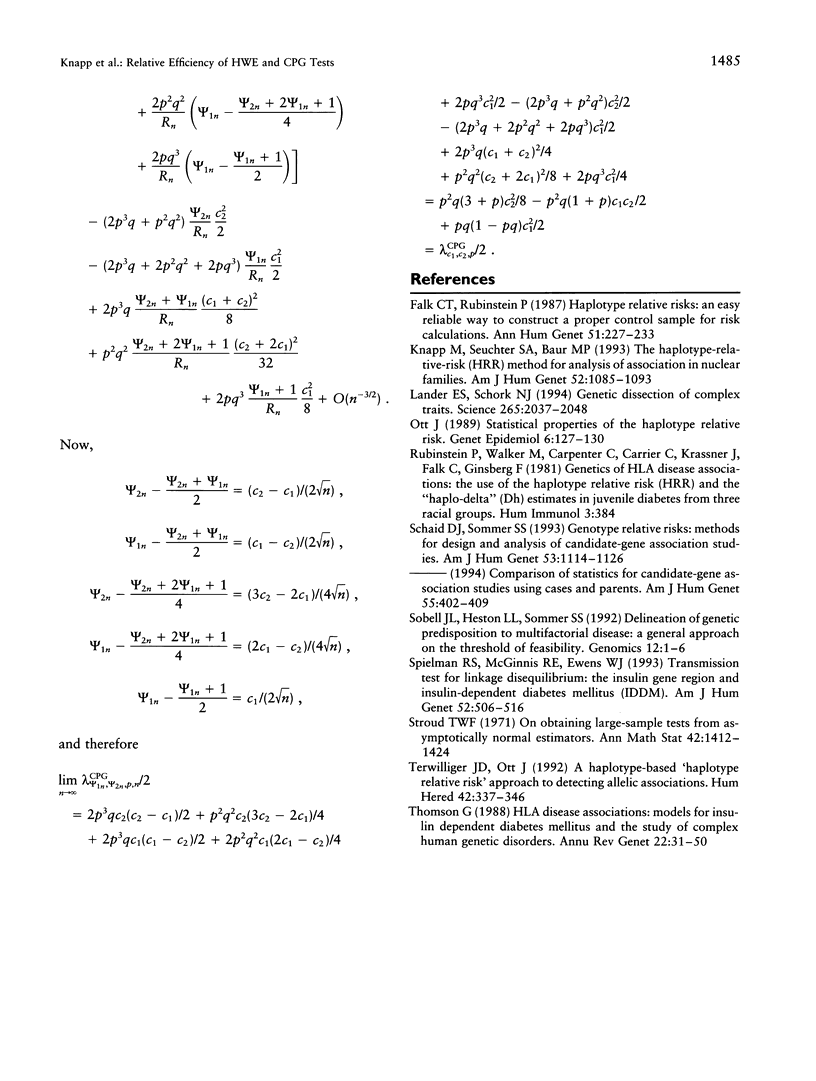
Selected References
These references are in PubMed. This may not be the complete list of references from this article.
- Falk C. T., Rubinstein P. Haplotype relative risks: an easy reliable way to construct a proper control sample for risk calculations. Ann Hum Genet. 1987 Jul;51(Pt 3):227–233. doi: 10.1111/j.1469-1809.1987.tb00875.x. [DOI] [PubMed] [Google Scholar]
- Knapp M., Seuchter S. A., Baur M. P. The haplotype-relative-risk (HRR) method for analysis of association in nuclear families. Am J Hum Genet. 1993 Jun;52(6):1085–1093. [PMC free article] [PubMed] [Google Scholar]
- Lander E. S., Schork N. J. Genetic dissection of complex traits. Science. 1994 Sep 30;265(5181):2037–2048. doi: 10.1126/science.8091226. [DOI] [PubMed] [Google Scholar]
- Ott J. Statistical properties of the haplotype relative risk. Genet Epidemiol. 1989;6(1):127–130. doi: 10.1002/gepi.1370060124. [DOI] [PubMed] [Google Scholar]
- Schaid D. J., Sommer S. S. Genotype relative risks: methods for design and analysis of candidate-gene association studies. Am J Hum Genet. 1993 Nov;53(5):1114–1126. [PMC free article] [PubMed] [Google Scholar]
- Sobell J. L., Heston L. L., Sommer S. S. Delineation of genetic predisposition to multifactorial disease: a general approach on the threshold of feasibility. Genomics. 1992 Jan;12(1):1–6. doi: 10.1016/0888-7543(92)90398-c. [DOI] [PubMed] [Google Scholar]
- Spielman R. S., McGinnis R. E., Ewens W. J. Transmission test for linkage disequilibrium: the insulin gene region and insulin-dependent diabetes mellitus (IDDM). Am J Hum Genet. 1993 Mar;52(3):506–516. [PMC free article] [PubMed] [Google Scholar]
- Terwilliger J. D., Ott J. A haplotype-based 'haplotype relative risk' approach to detecting allelic associations. Hum Hered. 1992;42(6):337–346. doi: 10.1159/000154096. [DOI] [PubMed] [Google Scholar]
- Thomson G. HLA disease associations: models for insulin dependent diabetes mellitus and the study of complex human genetic disorders. Annu Rev Genet. 1988;22:31–50. doi: 10.1146/annurev.ge.22.120188.000335. [DOI] [PubMed] [Google Scholar]


